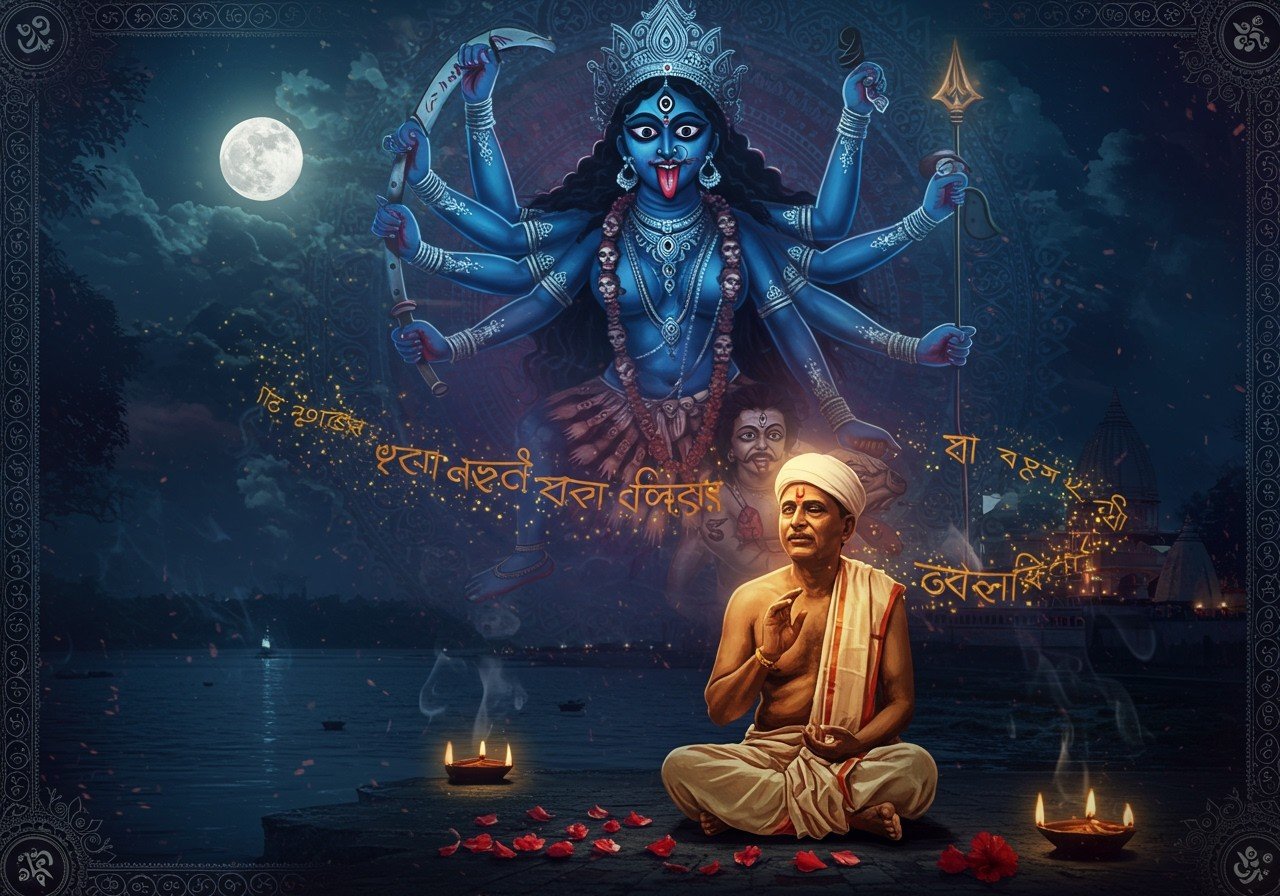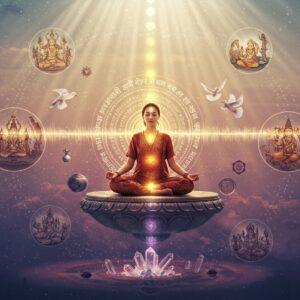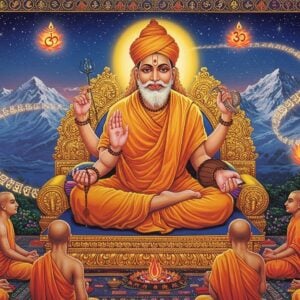Ramprasad Sen: A Poetic Journey into Divine Devotion

Ramprasad Sen’s spiritual poetry has inspired countless devotees. A prominent figure in the 18th-century Bhakti movement in Bengal, his works deeply resonate with culturally rooted Indians, reflecting devotion and tradition. Explore the life, poetry, and enduring legacy of this remarkable saint.
Who is Ramprasad Sen?
Ramprasad Sen (c. 1723/1718 – c. 1775) was a revered Bengali saint, poet, and mystic, central to the Shakta tradition of Hinduism, which venerates the Divine Mother, Kali. His unique style blends lyrical beauty with profound spiritual insight. His devotional songs, known as ‘Ramprasadi Sangeet’, are integral to Bengali culture, often sung in homes and temples.
Find devotional books and prayer guides at poojn.in.
Ramprasad Sen’s Biography
Born around 1718-1723 in Kumarhatta, Bengal, Ramprasad showed early spiritual inclinations, nurtured by his devout parents. His upbringing combined traditional education with spiritual teachings, shaping his later works. He initially led a conventional life, supporting his family. However, his spiritual calling intensified, centering on Kali, leading him to renounce worldly pursuits for a life devoted to spirituality and poetry.
Ramprasad Sen’s Family Tree
Ramprasad’s family significantly influenced his spiritual development. His parents fostered a devotional atmosphere, encouraging his religious leanings. Despite societal pressures, they largely supported his spiritual journey. His descendants have preserved his legacy, transmitting his songs and teachings through generations, ensuring his spiritual and cultural heritage thrives.
Ramprasad Sen’s Poems
Ramprasad’s poetry is renowned for its heartfelt devotion to Kali, exploring divine love, surrender, and the interplay of joy and sorrow. His simple language conveys profound spiritual truths. Poems like “I’m Sick Of Living Mother” and “Tell Me, Brother, What Happens After Death?” express a yearning for divine connection, while others like “Meditate On Kali! Why Be Anxious?” offer solace and trust in the Divine Mother’s protection. His fusion of folk melodies and classical ragas created a lasting musical style. His poems also addressed societal issues like famine and hardship, mirroring the struggles of his time.
- Some of his most powerful poems are “I’m Sick of Living Mother” which conveys the pain of earthly existence and the longing for union with the Divine. It also explores the paradoxes of faith and doubt.
- Another notable work, “Tell Me, Brother, What Happens After Death?”, delves into the mysteries of the afterlife and the search for spiritual liberation. It contemplates the nature of existence and the soul’s journey.
The Life and Legacy of Ramprasad Sen
Ramprasad Sen’s legacy thrives in contemporary India. His ‘Ramprasadi Sangeet’ is celebrated in music, literature, and religious practices, fostering devotion and cultural pride. His works revive interest in Bhakti and Shakta traditions, offering a timeless link to spiritual devotion. His life embodies the balance between tradition and modernity, demonstrating how spirituality can enrich daily life.
Today, his poetry inspires those seeking spiritual depth and cultural identity. His heartfelt devotion offers wisdom and solace in our fast-paced world.
Explore traditional jewelry for your devotional practices at poojn.in.
How Poojn.in Supports Your Devotional Journey
Poojn.in provides devotees with essential items for connecting with Ramprasad Sen’s legacy and practicing Shakti worship. Our curated collection includes:
- Authentic Shakti puja items and samagri sets, meticulously crafted for traditional worship. These sets contain everything needed for proper observance.
- Traditional Bengali puja items, sourced responsibly to maintain authenticity and quality. These items are essential for traditional Bengali ceremonies.
We ensure quality and authenticity, offering pan-India delivery and expert customer support. Visit www.poojn.in to explore our complete collection.
Conclusion
Ramprasad Sen’s life and poetry highlight the power of devotion and spiritual expression. His heartfelt songs to Kali continue to inspire and comfort. His works remind us of tradition’s value and the peace found in spiritual practices. As we embrace modernity, his legacy teaches us to cherish our cultural roots. His simple yet profound poems illuminate spirituality as a guiding light. Through his influence, we connect with our heritage and find timeless wisdom.
FAQs on Ramprasad Sen: Life, Poetry, and Enduring Influence
Who is Ramprasad Sen?
Ramprasad Sen was a renowned Bengali poet and saint devoted to Kali. His songs and poems express profound spiritual emotion and divine love.
What is Ramprasad Sen’s biography?
Ramprasad Sen (c. 1718/1723–1775) was born in West Bengal. He is celebrated for his devotional poetry, especially the Shyama Sangeet praising Kali. His works continue to influence Bengali culture and spirituality.
What is known about Ramprasad Sen’s family tree?
Details about his family tree are limited. He likely came from a Brahmin family, his deep spiritual connection possibly stemming from his upbringing.
What themes are found in Ramprasad Sen’s poetry?
His poetry explores divine love, devotion, and the mystical relationship with Kali, expressing longing and spiritual surrender.
Why is Ramprasad Sen’s influence enduring?
His influence endures because his poems resonate with Bengal’s spiritual and cultural ethos. The depth of devotion in his work continues to inspire seekers of spiritual connection.
What is Shyama Sangeet?
Shyama Sangeet is a genre of devotional songs dedicated to Kali, largely attributed to Ramprasad Sen. These songs are known for emotional depth and spiritual fervor.
How is Ramprasad Sen remembered today?
He is revered as a saint and poet whose works are still sung and cherished. His poetry is vital to Bengali religious and cultural life.
What impact did Ramprasad Sen have on Bengali culture?
He profoundly impacted Bengali culture, enriching it with devotional songs and poetry. His works have shaped Bengal’s spiritual and cultural landscape.


